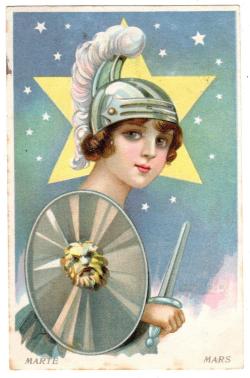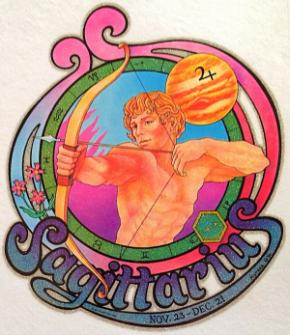This video pissed people off, but hey! The Saturn return is SERIOUS. If have two minutes and you want fact about your Saturn return – here you go: Reality does not create reality! You’re the one running your life! … Read More…
Hot Topics: Synastry, Virgo, Harry & Meghan, Eclipse, Mars, Pluto, Silent, Sagittarius & Saturn Conjunct Pluto
Today in the forum – Venus – Pluto in Synastry Prince Harry and Meghan Markle Virgo Moon Thread New Moon Eclipse & Stellium In Capricorn: Christmas 2019 I’m tired of rubbing others the wrong way Pluto at 20 Capricorn for … Read More…
Nitpicking Entertainment – Gemini, Virgo, and Aquarius
 Virgo is famous for nitpicking. If there is a flaw or mistake anywhere in their orbit, their sharp minds can’t help but notice. This is textbook astrology. But I think this is a Mercury function in general, showing up especially in the signs of Mercury’s dignity or exaltation. That would be Gemini, Virgo, and Aquarius.
Virgo is famous for nitpicking. If there is a flaw or mistake anywhere in their orbit, their sharp minds can’t help but notice. This is textbook astrology. But I think this is a Mercury function in general, showing up especially in the signs of Mercury’s dignity or exaltation. That would be Gemini, Virgo, and Aquarius.
While this may not be immediately evident, try watching TV with anyone heavy in these signs and you’ll see what I mean. For them, critiquing the show, finding plot holes and mistakes, is a time-honored tradition. And it doesn’t mean that they dislike whatever entertainment they’re consuming! Quite the opposite! Their minds are so active that they simply can’t help it. In fact, if they’re nitpicking, they probably love it. It is their way of engaging with the content, however irritating it is to other people.

Your soul is MINE, Goomba
Having a Gemini Moon myself, I am frequently guilty of this, much to my partner’s frustration. My favorite example is a few years ago, when he was playing a new Super Mario game. In the game, Mario, in all his cartoonish glory, is navigating a world of relatively realistic-looking humans, and is able to jump into their bodies to control them. The conversation went a little like this:
“Oh wow. If this is what normal people look like, Mario has problems.”
“I guess so.”
“Why is no one reacting to a living cartoon just walking around Tokyo? Do they just think he’s a mascot?”
“I have no idea, babe.”
“Oh my god, is he possessing people?”
“Kind of, yeah.”
“How does that even work? Does he just tell their soul ‘Move over, I’m driving,’?”
“I don’t know, okay?”
“Can people see him? Can they see him possessing people? Do they care? WHY DOES NO ONE STOP HIM?”
“You know what, I’ll just play later.”
I know, I know. I feel for him, I really do! I can easily see how annoying it is. But it is also a real, genuine expression of my soul, and it is not meant to take away his enjoyment. To the contrary – I’m actually trying to share it with him. I’m trying to show that I’m engaged.
So the next time a Mercury-heavy person in your life starts pointing out that your favorite sitcom character has been pregnant for over a year, or that or that Raiders of the Lost Ark would have ended the same whether or not Indiana Jones ever showed up, try not to pull your hair out. They’re just trying to be part of things.
Do you do this? What about people in your life? Where is your Mercury?
Consult with Midara.
My Mars Return in Libra Squares Saturn In Capricorn – OUCH
 Mars in Libra is currently closing a square with Saturn In Capricorn. The clash will peak on October 27th, 2019, the day of the New Moon In Scorpio. This is a horrible combination. I’d know. It’s personal to me!
Mars in Libra is currently closing a square with Saturn In Capricorn. The clash will peak on October 27th, 2019, the day of the New Moon In Scorpio. This is a horrible combination. I’d know. It’s personal to me!
I have natal Mars in Libra. Just look at this prior whining:
I wrote those posts with Saturn transiting my natal Mars, before Mars entered Libra. I was experiencing pressure; now that pressure is inflamed. This is my Mars return.
If you’re in a similar boat, you’re probably wondering if this will have a lasting effect. I hate to say this, but yes it will. Your Mars return chart is in effect for two years.
So what can you do?
- Discipline yourself. Train within some kind of framework.
- Business partnerships are favored but you’ll have to grind it out. Be fair in your dealings!
- You’re going to be rejected. Persevere anyway!
- You may enjoy great success at this time; it just won’t be easy – period.
- Expect to be slowed down, one way or the other. But what you learn during this period will have lasting value.
- Carry your end in social interactions – more than your end, if possible.
- Expect to have support, but only if you’re adhering to Saturn principles – take responsibility and do the right thing. The support is likely to be thin, but it should be also be sufficient.
- BOUNDARIES. Create your own and respect the boundaries of others when you run into them.
- Conserve your energy.
If you’re studying this, here’s is a post regarding my 2017 Mars Return. It was a much better situation!
Is this your Mars return? What’s going on?
NEW MOON REMINDER . . . . . October 27, 11:38 pm EDST
S
NEW MOON POWER DAY REMINDER… Sunday, October 27, 11:38 pm – EDST is the New Moon Power Day and time in October! Don’t miss this opportunity to make wishes for goals you’d like to reach and experiences you’d like to have.
Because this New Moon is in the sign of SCORPIO, it’s a powerful time for new beginnings in your most intimate relationships. This is a powerful New Moon to make wishes involving attracting a soulmate and increasing the passion in your sex life. Long-term goals can begin easily manifesting through using the energy of this intense and transformational New Moon.
For success, your wishes must be handwritten on paper and ten wishes maximum are allowed on each power day. The most potent time is the first 8 hours AFTER the exact time of the New Moon; within the first 48 hours, it will still work. The potency continues to exist for another twelve hours but is weaker. For clear success, it’s best to avoid wishing during those hours when the Moon is Void of Course.
The exact time of October’s NEW MOON occurs on October 27, 11:38pm, EDST. Due to the action of the void of course Moon during the 48-hour New Moon power time, your best bet is to avoid wishing during the hours of 1:34pm – 5:58pm on October 29th.
To see your most potent times for wishing during October’s New Moon, Members can LOGIN HERE.
Among other things, SCORPIO rules transformation and releasing old “baggage.” The energy of SCORPIO gives you the drive and focus to achieve your desires and the courage to take constructive risks that lead to a sense of empowerment. In relationships, this New Moon promotes passion, integrity, and deep emotional connections.
Because the New Moon of October is in the sign of SCORPIO, it is the most potent time of the year for wishing to deepen your intimate relationships, focus on your desires, and release harmful habits and thought processes. SCORPIO also rules loans and debt, making this an optimal New Moon to manifest a debt-free future.
For more New Moon tips for OCTOBER and suggested wording for wishes when the New Moon is in SCORPIO, click here and select the “New Moon Power Days” icon from the Membership Menu. To learn more about the benefits of membership at $4.95/mo, click here.
Be sure to check out your Monthly Horoscope to learn how the October 2019 New Moon impacts your personal astrological sign.
Consult Jan Spiller’s book – New Moon Astrology – for the complete “Rules of the Road” for wishing under the New Moon.
Need Help With Your Saturn Return in Capricorn?
 Are you facing your Saturn return in Capricorn? I am working on the end of the year stuff… this huge stellium in Capricorn, Jupiter heading into Capricorn, etc.
Are you facing your Saturn return in Capricorn? I am working on the end of the year stuff… this huge stellium in Capricorn, Jupiter heading into Capricorn, etc.
I realized I had no link to the workshop that Satori and I put together to help people with this transit. I’ve got significant Capricorn in my chart. She has a Capricorn moon so we’re both experienced and equipped to deal with difficulty and hardship. We’re also “moms” and we clearly want to help people.
I’m sorry for missing this; for slacking on it. If you’re struggling with Saturn in Capricorn, this workshop will help you for sure. If this is your Saturn return, that goes double!
See, both Satori and I are uber-responsible and terrified. We don’t have the balls to sell you junk!
Here it is:
Saturn In Capricorn Workshop
I’m also going to put an ad back on the sidebar so it will be easy to find.
Preview of Pluto in Aquarius – Deepfakes
 This blog has long had a reputation for being well ahead of trends in the collective. In this spirit, there is an emerging technology we should all be aware of – deepfakes. This is technology that allows people to create audio and video content through machine learning. What it amounts to in practice is the ability to manipulate a person’s voice or image to appear to be doing something they have not actually done. This is a preview of what we will be dealing with when Pluto, which exposes the dark side of whatever it touches, enters Aquarius, which rules technology.
This blog has long had a reputation for being well ahead of trends in the collective. In this spirit, there is an emerging technology we should all be aware of – deepfakes. This is technology that allows people to create audio and video content through machine learning. What it amounts to in practice is the ability to manipulate a person’s voice or image to appear to be doing something they have not actually done. This is a preview of what we will be dealing with when Pluto, which exposes the dark side of whatever it touches, enters Aquarius, which rules technology.
There have already been problems. Celebrities’ faces have been superimposed on the bodies of pornographic actresses. Worse, this same thing has been done with the faces of regular women for the purpose of revenge porn. And since the technology is relatively new, this technique has been successful in essentially ruining these women’s lives.
This technology has also been used in simple fraud. In September, a CEO of an energy firm in the UK was on the phone with someone he believed to be his boss, the CEO of the firm’s parent company. He was instructed to wire nearly $250,000 to the account of a supplier. The only reason the fraud was detected was that the grifter had neglected to spoof the phone number, and the CEO recognized that the call was coming from the wrong country. However, the culprit still hasn’t been found.
But there are far more sinister implications. In addition to ruling technology, Aquarius also rules the collective. So there is no reason to believe that these kinds of issues will remain confined to individuals. This is going to affect us all. And while Pluto certainly exposes the underbelly, it is also the mechanism by which people consolidate power.

…which is why I’ll need Austria to wire 2 million Euros
One of the most sophisticated ways the technology has been used so far is a program called “Synthesizing Obama,” in which a group of researchers from the University of Washington created a series of videos of Barack Obama seemingly saying outrageous and silly things. And this is where the real problem lies.
We already have problems with fake news being spread for the express purpose of sowing discord. Imagine what could be done with deepfakes. We could have video of the president calling for military strikes against our allies, or warning of a national emergency. We could have elections swayed by video of candidates disparaging their own voters, or committing violent acts. And it doesn’t stop there. Imagine powerful world leaders or CEOs speaking on video conference. It would be painfully easy for an imposter to gain access by using the voice and appearance of someone who is expected on the call. Imagine how much information could be stolen. And imagine the misinformation that could be seeded. It is chilling.
There have been attempts by governments and corporations to rein this in, but they have so far been largely unsuccessful. You can’t use Pluto in Capricorn solutions on a Pluto in Aquarius problem. So the best we can do right now is to be aware of this emerging technology, because this is something we will certainly hearing more about. This is a problem that will only grow with time. And finally, protect your mind. There are so many forces that would like to sway your thinking and your beliefs. Make sure you don’t fall victim to their attempts.
What potential use to you see for this technology? What are you Pluto in Aquarius Predictions?
Consult with Midara.
Weekly Forecast: October 21-25, 2019 – Venus Embellishes Scorpio Season
 Monday morning, Scorpio Mercury conjoins Pallas Athena. These two signal a time of mental clarity regardless, but in Scorpio this conjunction is crafty. It confers the ability to sniff out hidden facts and turn them into gold.
Monday morning, Scorpio Mercury conjoins Pallas Athena. These two signal a time of mental clarity regardless, but in Scorpio this conjunction is crafty. It confers the ability to sniff out hidden facts and turn them into gold.
The two continue on together into next week when Venus overtakes them in the run-up to Halloween. As they say, keep you eyes and ears open. Keep all your senses open and make sense of what you receive. In Scorpio we receive; we take in and transmute. For further use of this energy, click here: Mars Square Pluto In November: Plan Now With Mercury and Venus in Scorpio.
Also Monday, Scorpio Venus trines Neptune. This is a lovely aesthetic, perfect for digging up the ideal components of a divinely delicious dream plan. Though it’s not the best for being realistic about your Mercury-Pallas plans. It casts a glamor on the seedier or questionable bits of info we glean. The risks are twofold: prettying up something sketchy or ignoring something important. However, the pros are formidable too. There’s no better influence to improve and pack in value to your Scorpio visions.
When Venus overtakes Mercury next week, it moves ahead free of the Neptune fog. It’s part of the process. If we didn’t overshoot what’s possible, we’d never light on the best plan we could manage.
Scorpio Venus spends the rest of this week moving into sextile to Pluto. Manipulation gets a bad reputation for good reasons. However, we all manipulate to some extent. This week we’ve got the good kind, provided it’s not wielded by someone with bad intentions. This kind of manipulation is pleasurable. With Mars in Libra heading into square to Saturn, our actions might suffer from a budget issue, but Venus-Pluto has a lot to give without ever spending a dime. Take advantage of your ability to give and receive pleasure. The opportunities are subtle but delectable,
Monday’s Cancer Moon squares the Sun then heads into Leo. Once in Leo, the Moon trines Chiron and squares Uranus. Rise and shine. The mood may be clumsy, but the Venus-Neptune signature promises pleasure as Mercury-Pallas brings food for thought.
Tuesday, the Leo Moon sextiles Mars in Libra. It’s a mood to stretch and GO. Creativity is featured, so is self love and appreciation. Taking care of yourself and your own people is the first step for a good experience. Further into the day, the Moon squares Venus and trines Jupiter, going on to square Mercury overnight. The mood provides pomp and bluster while the senses require more subtlety. Meter yourself to get the results you’re after. Pay attention to the feedback you get, and meter your expressions.
Wednesday, the Leo Moon sextiles the last degree Libra Sun. The Moon approaches exact sextile as the Sun moves to Scorpio. Then the Moon moves to Virgo and through exact sextile to the Scorpio Sun. The Moon trines Uranus as the Sun picks up an applying opposition to Uranus. Change is afoot and we FEEL it. Frankly, it feels good. It’s enlivening. It alleviates boredom with the status quo. We LIKE the status quo, but it can feel stagnant.
Thursday, the Virgo Moon trines Saturn and opposes Neptune. It goes on to sextile Venus and trine Pluto. Let’s get back into reality, into the power of things that make sense to us… feeling grounded in tradition. It feels good now to be of service. If we’ve properly Leo-ed our Leo Moon bit, we’re ready to shine a light on helping others and getting satisfaction from practical magic.
Friday early, the Moon squares Jupiter. There’s a lot. A lot of what? To do, to think, to feel. Just start and it will even out. The Moon goes on to sextile Virgo ruler Mercury. Whistle while you work and you’ll work smarter. Later, the Moon moves to Libra and an opposition to Chiron as Venus moves toward its exact sextile with Pluto. An airy, social mood is poised to receive something real and vulnerable from others and create harmony. It’s a scary position to inhabit; but we can do it with a smile when we believe in our power to transmute what we encounter. And we do have that power. Use it.
Is that power manipulation? Yes, it is, the good kind. Healers use this kind of energy.
Mars Square Pluto In November: Plan Now With Mercury and Venus in Scorpio
 Okay, so I dreamed this, dreamed that I was supposed to write this. You know, just in case you forgot I’m a crackhead-Pisces. I had written both these quotes down on post-its in my post-it garden, and I keep a copy of The Art of War on the chair to the left of my desk. That’s the Scorpio Mars. I might need to start a war or something.
Okay, so I dreamed this, dreamed that I was supposed to write this. You know, just in case you forgot I’m a crackhead-Pisces. I had written both these quotes down on post-its in my post-it garden, and I keep a copy of The Art of War on the chair to the left of my desk. That’s the Scorpio Mars. I might need to start a war or something.
“No plan survives contact with the enemy.” –Helmuth von Moltke the Elder
“Plans are useless, but planning is indispensable.” –Dwight D. Eisenhower
Today we have Mercury in Scorpio (great for war plans) sextile Pluto in Capricorn (systemic destruction or pre-construction demo*). Venus in Scorpio sextiles Saturn, and we will benefit from crafty investment.
In the first week of the next month, we’ll have Libra Mars in square to Pluto. That’s provocative and volcanic engagement with the other, an other that comes sideways with a smile.
We don’t know the field of engagement, only its flavor. The point of those quotes taken as a whole is in the value of preparation as an exercise in expanding our capacity for intelligent and fruitful action in a future moment.
We go through all the possibilities, dig them out and play them out ahead of time, so that we come to each moment with experience. It is experience; it’s just not physical experience. Another good bit of info is to remember not to get too attached to your plan. Nail down your objective, your DESIRED outcome (Venus sextile Saturn) ahead of time, so that your action in time will serve your purpose.
Mars will square Saturn first. That’s much sooner, in a week. We plan now, so that we have experience running the possibilities before they’re realities. Mars square Saturn actions, ours and those of others, will bring about realities we must respond to. Then Mars-Pluto clears the decks.
Let’s look into our plans, our desires over time, and unearth the details now. We produce a quality, an acquired or enhanced trait within our mind and senses that trains us up for later. Uranus in Taurus during Scorpio season is a great asset here: Train yourself to jump into another perspective when the one you’re using doesn’t work.
*A bit now on Pluto in Capricorn followed up by Saturn: It’s not just destruction. Demolition is necessary to clear the earth for a solid new foundation. It is also necessary to pull the roots out of the ground once the tree is dead – if you want a fresh start with the best chance of long term prosperity. Yes Pluto is death and demo; it’s part of the circle of life. It can also be beautiful, particularly through the lens of Mercury in Scorpio, which we have in spades over this next month.
Sagittarius & Aging – Calming The Restless Soul
 Hi Elsa,
Hi Elsa,
You wrote, or maybe created a video on the subject of recognizing “Restlessness” in a natal chart. It got me thinking about that in myself, and my husband. What are some of the placements that would point to being restless? And is it your experience to see restlessness wrestled to the mat over time, and with age?
Thanks,
Restless or wrestled on Whidbey Island, US
Hi, Restless.
First, I should probably define, “restlessness”. A person might be mentally restless, which I call, “nervous and jerky”. That’s not what I’m talking about when I use that term. I’m talking about a person who is inclined to leave.
They want to go somewhere, so they leave.
They get to where they are going,. They’re there, so then they want to go somewhere, so they leave!
There’s always another horizon, see?
Recently I worked with a father who asked if his daughter was going to leave a bad man.
“Yes,” I said.
“How do you know?”
“Because she never stays…”
The primary signature for restlessness is a strong Jupiter, mashed with the moon. A person may have their moon in Sagittarius, Jupiter in Sagittarius aspecting their moon, Jupiter in the 4th house, etc.
As for a person curbing their tendency to move on as they age, this may or may not happen. A lot of Jupiter moon types see no value at all to being tethered on a short leash. But others come to a point where they look at their life and for all their adventures, they begin to feel it’s all been a cruise to nowhere.
MEANING is big for people with this signature. They’re seekers. It can be painful (for some) to realize there is no one there to share their travels or ideas or philosophies with. What’s it all mean?
If a restless person does hit this wall, they can definitely change their ways by simply realizing that restraining yourself is another adventure and way to expand and be (further) educated.
This video might help – A Stable Home For The Restless, Wandering Sagittarius Moon
This is a great topic for this time as Jupiter is leaving Sagittarius for Capricorn.
Are you a restless person who’s calmed with age? Tell us about it.


